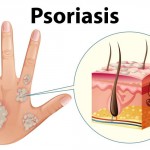Enteric Fever/ Typhoid
Enteric fever, also known as typhoid, is a common worldwide bacterial disease caused by the ingestion of contaminated food or water which contain the bacterium Salmonella enterica enterica, serovarTyphi. It is very common in India. Symptoms usually develop one to two weeks after exposure, and may be mild or severe. Symptoms include high fever, malaise, headache, constipation or diarrhea, rose-colored spots on the chest, and enlarged spleen and liver. Healthy carrier state may follow acute illness. Typhoid fever can be treated with antibiotics.
However, resistance to common antimicrobials is widespread. Healthy carriers should be excluded from handling food.
Symptoms
The symptoms of typhoid fever usually develop one to two weeks after a person becomes infected with the Salmonella typhi bacteria. The incubation period is usually one to two weeks, and the duration of the illness is about four to six weeks.
In first week:
Spiky high grade fever (103-104 F)
Vomiting – this usually affects children rather than adults
A dry cough
A dull headache that can be felt at the front of the head
Severe mental confusion, such as not knowing where you are or what is going on around you
A skin rash made up of pink spots that are 1–4cm wide – there are usually fewer than five spots known as "Rose spots"
A feeling of being increasingly very unwell
In second week Symptoms becomes more severe:
Swollen abdomen
A slow heartbeat (Bradycardia)
In third week
Loss of appetite
Weight loss
Physical exhaustion
Bouts of foul-smelling, yellow–green, watery diarrhoea
Severe swelling of the abdomen
Rapid breathing
A deterioration of mental state, such as severe confusion, apathy and, in some cases, psychosis (where a person is unable to tell the difference between reality and their imagination)
Causes
The bacteria that cause typhoid fever is S. typhi.
It spread through contaminated food, drink, or water. If person eats or drinks something which is contaminated, the bacteria may enter body. Then it travel into the intestines, and then into bloodstream, where it can get into lymph nodes, gallbladder, liver, spleen, and other parts of body.
Diagnosis
Your doctor may look for symptoms and medical histroy, if he suspects typhoid. but diagnosis is generally confirmed by blood culture.
Blood culture:
A complete blood count (CBC) will show a high number of white blood cells. A blood culture during the first week of the fever can show S. typhi bacteria. Body fluid or tissue culture For the culture, a small sample of blood, stool, urine or bone marrow is placed on a special medium that encourages the growth of bacteria.
In 48 to 72 hours, the culture is analysed under a microscope for the presence of bacteria. A bone marrow culture is often regarded as a more sensitive test for S. typhi. Although performing a culture test is the essential for diagnosis, in some instances other testing may be used to confirm a suspected typhoid infection, such as a test to detect antibodies to typhoid bacteria in blood or a test that checks for typhoid DNA in blood.
Other tests include:
ELISA (Enzyme linked immunosorbent assay) urine test to look for the bacteria that cause Typhoid fever
Fluorescent antibody to look for antibodies that are specific to Typhoid bacteria
Platelet count (platelet count will be low)
This is an indicative treatment. One should consult a physician before reaching to any conclusion.
Treatments
Medications: A fluoroquinolone such as ciprofloxacin. A third-generation cephalosporin such as ceftriaxone orcefotaxime is the first choice. Cefixime is a suitable oral alternative. Antibiotics, such as ampicillin,chloramphenicol, trimethoprim, sulfamethoxazole, amoxicillin and ciprofloxacin, have been commonly used to treat enteric fever.
This is an indicative information for better understanding of health. For any treatment purpose you should consult your physician.
Preventions
There are two vaccines licensed for use for the prevention of typhoid:
The live oral Ty21a vaccine (as Vivotif Berna)
The injectable Typhoid polysaccharide vaccine (Typhim Vi by Sanofi Pasteur and Typherix).
References:
CDC
NHS
WHO
U S National Library of Science







